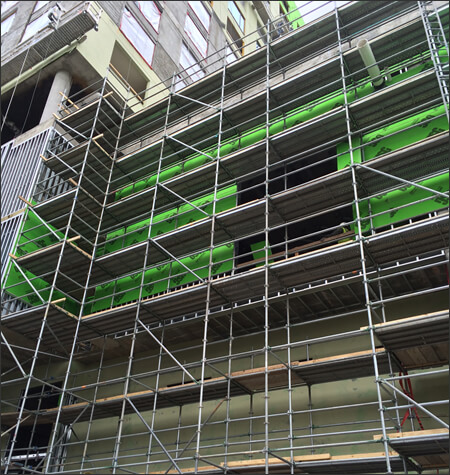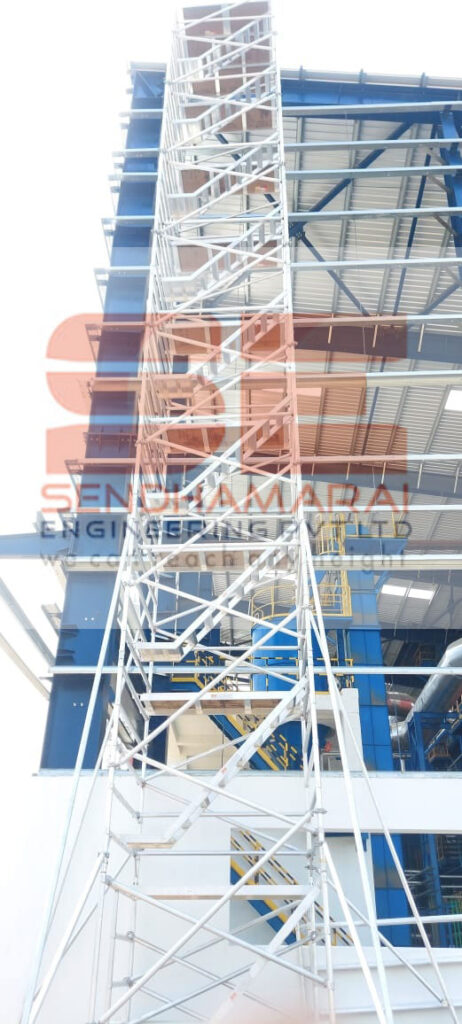The Benefits and drawbacks of Renting Out vs. Acquiring Scaffolding
The Future of Scaffolding: Fads to Watch ========================================
The future of scaffolding is evolving through advanced materials like compounds and modern alloys. Digital devices such as BIM are boosting project coordination and efficiency on construction sites. Safety is being focused on with real-time surveillance systems and wearable technology. Sustainability practices are driving the adoption of green services in building. Modular scaffolding systems offer flexibility and cost-efficiency. Automation and robotics combination are improving traditional techniques, enhancing productivity and security. These patterns are transforming the industry, offering improved efficiency and flexibility. Discover how these fads are changing scaffolding practices right.
Advanced Products and Composites
Developing rapidly in the building and construction sector are innovative products and composites, changing the traditional methods of scaffolding. These innovative materials provide an unique combination of lightweight resilience and structural honesty, attending to essential obstacles encountered in the field. scaffolding near me
By using advanced products such as carbon fiber-reinforced polymers, fiberglass, and high-strength light weight aluminum alloys, scaffolding systems can currently supply boosted sturdiness while remaining light-weight. This particular not just streamlines transport and installment however additionally ensures enhanced safety and security for employees on-site.
In addition, the combination of composites in scaffolding parts enhances structural honesty, enabling greater load-bearing capacities and improved security. This improvement is critical in modern building jobs that demand durable support group to suit larger loads and make sure the safety of employees and the general public.
Digitalization and Building Details Modeling (BIM)
The integration of Structure Info Modeling (BIM) right into scaffolding projects has actually reinvented project control by enabling exact preparation and visualization.
Through the usage of electronic devices, process within the building market have actually been streamlined, enhancing effectiveness and decreasing errors.
Accepting digitalization and BIM modern technologies is leading the way for a much more innovative and interconnected technique to scaffolding projects.
BIM for Task Coordination
In the domain of building and construction job coordination, the combination of Digitalization and Structure Information Modeling (BIM) is revolutionizing the means stakeholders team up and manage complex projects. BIM facilitates boosted communication and sychronisation amongst project participants with features like digital reality simulations and 3D modeling cooperation.
Digital fact simulations enable stakeholders to envision the task in a simulated setting, making it possible for much better decision-making and analytic prior to actual construction begins. Furthermore, 3D modeling cooperation enables real-time communication and responses on task designs, bring about improved accuracy and performance in the control procedure.
Digital Equipment Streamline Workflows
The boosting reliance on electronic devices, consisting of Digitalization and Structure Information Modeling (BIM), has significantly structured operations in the construction market, enhancing partnership amongst stakeholders and boosting job effectiveness.
Digitalization allows task groups to accessibility real-time info, reducing mistakes and hold-ups. Structure Details Modeling (BIM) gives a detailed digital representation of a task, facilitating far better decision-making and control.
Additionally, virtual reality training permits workers to imitate tasks in a risk-free environment, enhancing ability growth and safety methods. Cloud-based collaboration platforms even more support communication and data sharing among job members, no matter their physical areas.
Improved Safety and Surveillance Solutions
As improvements in technology remain to change the construction industry, the assimilation of enhanced security and tracking systems in scaffolding is becoming increasingly important. Safety innovation and monitoring gadgets are playing an essential duty in guaranteeing the wellness of employees and the efficiency of construction projects.
Security modern technology such as closeness sensors, wearable tools, and real-time surveillance systems are being integrated into scaffolding frameworks to prevent accidents and offer prompt help in instance of emergencies. These systems can alert workers and supervisors of potential hazards, track the location of employees on-site, and monitor environmental problems to safeguard a risk-free working environment.
Surveillance devices like video cameras, drones, and IoT sensing units are being made use of to look after building and construction tasks, identify risks, and assess the architectural stability of scaffolding. By providing real-time information and understandings, these gadgets enable project managers to make informed choices, maximize process, and address safety and security worries immediately.
Sustainable Practices and Eco-Friendly Solutions
In the building and construction sector, a change in the direction of sustainability appears through the use of environment-friendly structure materials and energy-efficient building methods. Incorporating environmentally friendly services not only decreases the environmental influence but additionally promotes a much healthier work area for workers.
Embracing these methods can bring about long-term cost savings and contribute to an extra sustainable future for the scaffolding sector.
Eco-friendly Structure Products
In the middle of an expanding global emphasis on sustainability in building and construction, the adoption of green building products has emerged as a critical strategy for reducing ecological impact and promoting eco-friendly practices. Environment-friendly technologies and sustainable remedies are driving the shift towards greener products in the building market.
These materials include a range of alternatives, including recycled, renewable, and energy-efficient resources that decrease waste and carbon footprint. From recovered timber and bamboo to reused steel and low-VOC paints, using eco-friendly structure products not just supports environmental conservation however also boosts indoor air quality and passenger wellness.
With a boosting focus on sustainable practices, the combination of environment-friendly building materials is coming to be a standard in modern-day building and construction projects, leading the way for a much more eco aware future.
Energy-Efficient Construction Methods
The assimilation of energy-efficient building strategies represents a basic change towards lasting techniques and green services in the modern construction sector. Smart innovation plays a vital role in optimizing power usage and minimizing ecological impact. By incorporating innovative techniques, building projects can accomplish substantial power savings while advertising a greener future.

Some crucial strategies in energy-efficient building and construction include:
- Making use of advanced insulation products to enhance energy efficiency.
- Carrying out smart heating, ventilation, and a/c (COOLING AND HEATING) systems for ideal temperature level control.
- Installing energy-efficient lighting remedies to lower electricity consumption.
- Integrating renewable resource sources such as photovoltaic panels to power construction tasks sustainably.
- Using easy design methods to take full advantage of all-natural light and air flow, minimizing the requirement for man-made lighting and air conditioning.
Modular and Prefabricated Scaffolding Equipments
Built scaffolding systems offer unparalleled efficiency in construction jobs as a result of their modular design and ease of assembly. These systems give customization choices that deal with certain project needs, allowing for adaptability in design and capability. Whether it's changing the height, width, or setup, prefabricated scaffolding can be tailored to fit different construction requirements, inevitably boosting productivity on-site.
In addition to customization, expense effectiveness is a considerable advantage of modular scaffolding systems. By streamlining the production process and lowering onsite labor time, upraised systems can assist lower general project costs. This cost-effectiveness makes them an appealing option for construction companies wanting to optimize their spending plans without endangering on top quality or safety.
Automation and Robotics Integration
Incorporating innovative automation and robotics into scaffolding systems improves effectiveness and security in building and construction jobs. This integration notes a considerable advancement in the building sector, providing various benefits:
Improved Precision: Automation warranties exact positioning of scaffolding elements, decreasing human mistake.
Enhanced Safety and security: Robotics can take care of repetitive or harmful jobs, lessening the danger to employees.
Raised Productivity: Automated systems can work all the time, accelerating job timelines.
Real-time Tracking: Sensors in robotic scaffolding systems give data on lots capacities and architectural honesty in real-time.
Versatility: Automated scaffolding can get used to changing job demands swiftly, using flexibility on-site.
The harmony between automation, robotics, and scaffolding is reshaping traditional building practices, leading the way for a lot more effective, much safer, and adaptable building and construction jobs.
As innovation remains to evolve, the combination of automation and robotics in scaffolding systems is set to come to be even more widespread, changing the building sector.
Frequently Asked Inquiries
Can Scaffolding Be Made Completely Out of Recycled Materials to Reduce Ecological Influence?
Using recycled products in scaffolding construction is a sustainable method that minimizes environmental influence in the construction industry. Accepting this practice can lead to a much more environment-friendly and efficient use of resources.
How Are Drones Being Utilized in Conjunction With Scaffolding for Surveillance and Evaluation Purposes?
Drone integration in scaffolding permits remote surveillance and inspection, enhancing safety requirements and performance. Drones supply aerial views, making it possible for fast evaluations of frameworks. This modern technology simplifies procedures, lowers threats, and assurances compliance with safety and security policies.
What Are the Potential Risks and Difficulties Connected With Implementing Automation and Robotics in Scaffolding Solutions?
Security problems arise with executing automation in scaffolding because of technological restrictions. Labor displacement is a challenge as robotics advance. Making sure these systems satisfy safety standards, address ergonomic problems, and supply reputable assistance remains important.
Are There Any Type Of Rules or Requirements in Place to Ensure the Safety and Performance of Modular and Prefabricated Scaffolding Equipments?
Governing conformity is essential in ensuring the security and effectiveness of modular and prefabricated scaffolding systems. Different security criteria, such as OSHA regulations and sector guidelines, are in place to promote the integrity and integrity of these systems. https://putneyscaffolding.co.uk
How Do Improvements in Digitalization and BIM Innovation Effect the Training and Abilities Needed for Scaffolding Professionals?
Developments in digitalization and BIM modern technology are transforming the scaffolding sector, bring about increased automation. This change effects scaffolding specialists by necessitating continuous training development to adjust to brand-new electronic tools and processes, making certain expertise and security.
Final thought
To sum up, the future of scaffolding is relocating in the direction of:
- Advanced products
- Digitalization
- Boosted precaution
- Sustainable techniques
- Modular systems
- Automation integration
These trends are forming the scaffolding market and driving advancement in building and construction projects.

By embracing these advancements, building and construction firms can improve performance, security, and environmental sustainability in their operations.
It is essential for the industry to accept these trends to stay affordable and satisfy the advancing demands of the building and construction sector.
